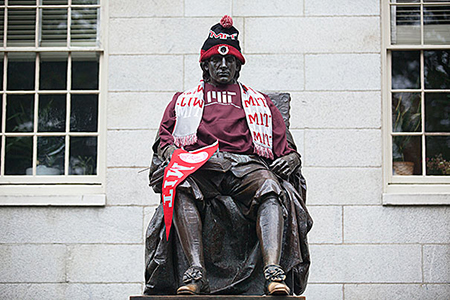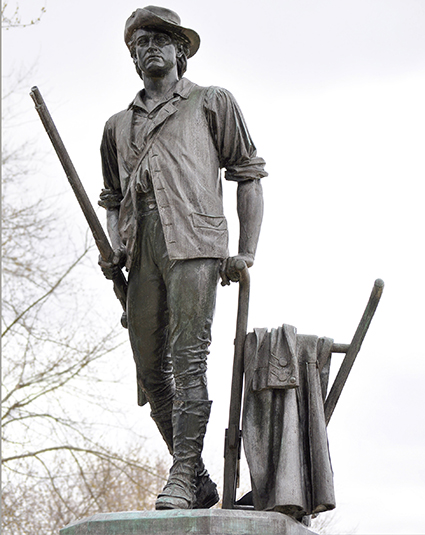Which Former MIT Student is Responsible for Every Hack on the John Harvard Statue?
-
-
slice.mit.edu
Filed Under
Recommended

Anyone who has spent spring on campus should be familiar with the Patriots’ Day holiday, Boston’s unofficial beginning of spring and the date of the Boston Marathon since 1897.
Historically, Patriots’ Day honors the first military engagements of the American Revolution—the battles of Lexington and Concord, which took place about 10 miles west of Cambridge in 1775. The battle at Concord’s Old North Bridge is commemorated by The Minute Man, a statue in Concord sculpted by former MIT student Daniel Chester French, who would later become famous for sculpting the colossal marble statue of Abraham Lincoln at the Lincoln Memorial.
French, who lived from 1850 to 1931, spent less than a year at MIT as a student in the late 1860s. According to Chesterwood.org, the website for his historic property in Stockbridge, Massachusetts, he failed physics, algebra, and chemistry before leaving school to work and study with artists John Quincy Adams Ward and William Rimmer.
While his time as a student was unremarkable, French’s Cambridge legacy is permanent. In 1884, He sculpted the bronze sculpture of John Harvard in Harvard Yard that is a frequent target for MIT hackers, who have added a toilet stall door, a brass rat, and an “Ask Me about My Lobotomy” sign over the years.

About 10 years prior, he was commissioned to execute The Minute Man, his first major monument, and the statue was dedicated on the battles’ centenary on April 19, 1875. The seven-foot statue, which depicts a farmer armed with a rifle, launched his career. French spent parts of the next 15 years working in Boston, Washington, D.C., New York, Florence, and Paris.
By the turn of the 20th century, French was a sought-after artist based at Chesterwood, which was designated a National Historic Landmark in 1965. In 1903, he sculpted Continents, a massive four-part piece at the entrance of the Alexander Hamilton U.S. Custom House in New York City, which depicts four women symbolizing Asia, America, Europe, and Africa.
French produced more than 100 monuments, memorials, and other works during his career, and in 1914, he was selected to sculpt the Lincoln statue. The work took more than three years, and the finished piece, unveiled in 1922, elicited some controversy: some believe that Confederate general Robert E. Lee’s face is carved into Lincoln’s hair.
“What I wanted to convey was the mental and physical strength of the great war President and his confidence in his ability to carry the thing through to a successful finish,” French wrote in 1922.
John Harvard remains an immovable—and irresistible—pranking target, but some MITers believe the statue could be a hack itself. Because no photographic evidence exists to indicate what John Harvard actually looked like, an MIT urban legend persists that French modeled the statue after one of his former MIT classmates.
Perhaps it was a hack, cast in bronze?
An earlier version of this article appeared in the March/April 2015 edition of MIT Technology Review magazine.







